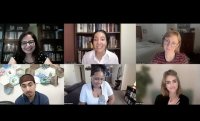Robert J. DeMott Short Prose Contest
A prize of $1,008.15 and publication in Quarter After Eight is given annually for a prose poem, a short short story, a micro essay, or other work of short prose. Steven Dunn will judge. Using only the online submission system, submit up to three pieces of no more than 500 words, each with a $15 entry fee, by November 30. All entries are considered for publication. Visit the website for complete guidelines.






